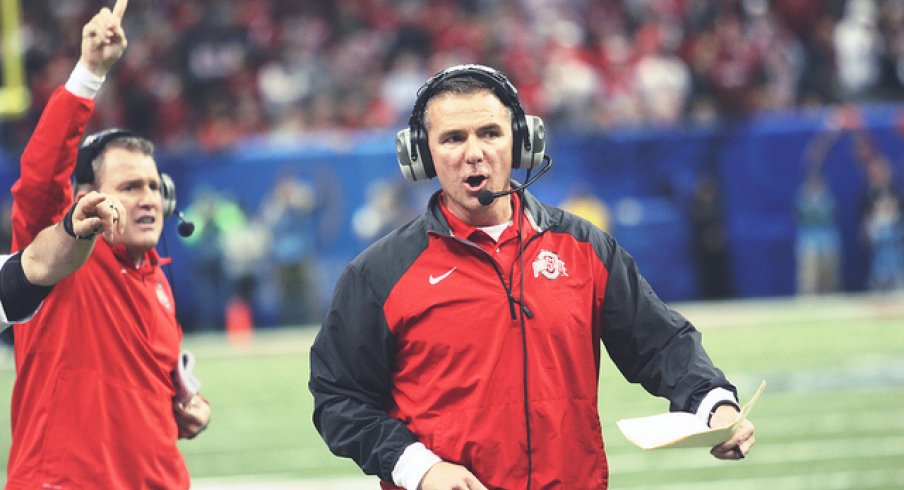Once upon a time, Urban Meyer was a detractor of up-tempo offenses sweeping the college football world. As his Ohio State Buckeyes prepare for Oregon in a National Championship clash that not only features, but defines the style of play, he now calls it the future of the sport.
“It is,” Meyer said. “Everybody says it's not. It is. It's an advantage for the offense. And if you don't take it, then that's fine.”
But you’d be foolish not to.
Still, before Meyer ever embraced it, he fought it tooth and nail while at Florida.
“There's a misunderstanding that we were a big tempo team,” Meyer said of his six years with the Gators. “We weren't.”
Despite a list of objections to the style of play, Meyer said he sent former assistant and current Mississippi State head coach Dan Mullen to Missouri after the Tigers’ breakout season in 2007 to see what all the buzz was about.
After all, it was worth a look and worth seeing if it could make an already-potent spread option offense better.
The end result when Mullen returned to Gainesville?
“I snatched that after about four days of spring practice,” Meyer said.
“Technique went to hell and our receiver coach is over there signaling instead of coaching receivers and that was,” Meyer said, shaking his head. “We ended that real fast.”
He added: “The negative of what's happened with the tempo offense is, you have an incredible leader at quarterback; he simply just takes a snap now … I had (former Florida quarterback and Heisman Trophy winner Tim) Tebow and I didn't want to lose that huddle … but that was the thing that held us back from going full up-tempo, four, five, six years ago.”
Of course, things have changed since then. Upon taking over Ohio State in 2012, Meyer hired offensive coordinator and quarterbacks coach Tom Herman, in part, to install such a philosophy in Columbus. The style of play, one that Meyer scoffed at, is a staple of his success with the Buckeyes.
And if Oregon’s offense looks strangely familiar Monday night in Dallas, it’s because it is. It’s fast-paced and filled with athletes who can run up and down, left and right.
Remind you of anyone?
“It’s very similar in a lot of ways. They have speed athletes, they like to work space and like to work their athletes in space,” said freshman linebacker Darron Lee.
“Whatever way they can get their athletes the ball in space, it’s just like our offense.”
You know, the one that's currently operating (and excelling, mind you) with its third-string quarterback in Cardale Jones.
For Oregon, its fulcrum is Marcus Mariota, the Heisman Trophy winner.
“Tempo offense is really hard (to defend), but tempo offense with an average player is not that hard," Meyer said. "He's the one that keeps the chains moving and that's when tempo gets you.
"The risk of tempo offense, which I debated for years, you three‑and‑out them and 24 seconds you just took off the clock and you're playing a good team, that's not good. So there's plus and minuses. You have a quarterback like (Mariota), that's usually pluses.”
The same could be said for Ohio State, though, which hasn't missed a beat despite losing Braxton Miller and J.T. Barrett to season-ending injuries.
Jones, of course, isn't Marcus Mariota, but he's a capable commander. The rest of the offense, inherently, just seems to take care of itself.


